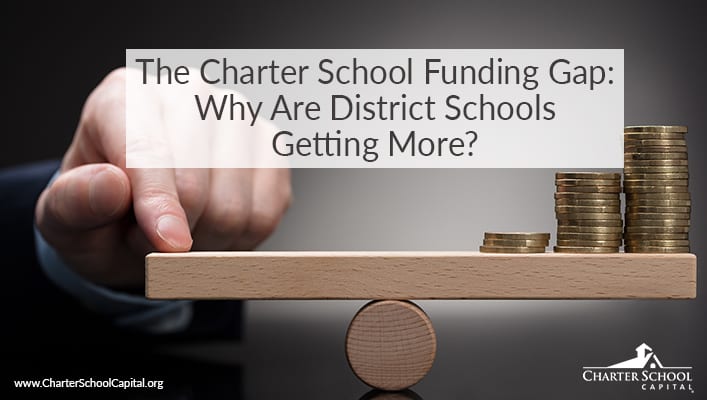
Editor’s Note: This post was originally published here on November 28th, by Education Dive. It was written by Linda Jacobson, the senior reporter for Education Dive: K-12 based near Los Angeles, California.
We think it’s vital to keep tabs on the pulse of all things related to charter schools, including informational resources, and how to support charter school growth and the advancement of the charter school movement as a whole. We hope you find this—and any other article we curate—both interesting and valuable.
Study: Funding gaps between district, charter schools widening in big cities
Dive Brief:
- Charter schools in 14 U.S. cities receive on average $5,828 less in per-pupil funding than traditional public schools, with funding gaps growing wider since 2003 in Atlanta, Los Angeles, Denver, Washington, D.C. and New York City, according to a report released Wednesday by researchers at the University of Arkansas.
- In actual spending, the funding gap between district and charter schools is the largest in Camden, New Jersey, with a more than $14,600 difference. And in terms of percentage, the gap was the widest in Atlanta — a 49% difference in per-pupil funding between $18,276 in traditional public schools and $9,382 in charter schools. The researchers gave Houston an A grade because charter schools there only receive 5% — or $517 — less in funding per student than district schools, the report says.
- The team, led by Corey A. DeAngelis of the Cato Institute, a free market-oriented think tank, and Patrick J. Wolf of the university’s Department of Education Reform, also analyzed documents and provided equity grades for schools in Boston; Indianapolis; Little Rock, Arkansas; Memphis, Tennessee; Oakland, California; San Antonio, Texas; and Tulsa, Oklahoma. New Orleans, which mostly has charter schools and has received federal funding to help schools recover from Hurricane Katrina, is a unique case and was excluded from the overall analysis. But the researchers still found some large disparities in funding between traditional and charter schools there.
Dive Insight:
Some experts argue that comparisons between district schools and charters are unfair for a variety of reasons. Traditional public schools operate under some different legal mandates and policies than charters, and charter schools serve families who choose to be there, not the general student population. Others also note that public schools serve a much larger proportion of students with disabilities, but the authors of this study argue that except for Boston, special education expenses shouldn’t be an excuse.
“While [traditional public schools] tend to enroll higher proportions of students with disabilities than charter schools, the additional spending required for students with special needs rarely explains all or even most of the inequities in the funding of public charter schools,” they write, recommending that states adopt weighted student funding formulas “and then funnel 100% of public school funding through that formula, regardless of whether the school the student is attending is a public charter or a traditional public school.”
The study is part of the researchers’ continuing work to compare how charters and district schools receive and use funds — data that can help guide policymakers as they make decisions about school funding, how many charter schools to authorize and perhaps how funding should be allocated. In areas where cooperation between charter schools and districts is more likely, these comparisons can also help school administrators learn from each other.
Last year, the team released a study showing that even with in-kind support, such as access to free facilities, charter schools in New York City receive almost 40% less funding per student than traditional public schools. And in February, the team released a cost-effective and return-on-investment analysis showing that for every $1,000 in per-pupil spending, charter school students earn more points in math and reading on the National Assessment of Educational Progress. Other researchers, however, criticized that study, raising questions over the methodology.
 If you are trying to meet operational expenses, expand, acquire or renovate your school building, add an athletic department, enhance school safety/security, or buy new technology, complete the online application below and we’ll contact you to set up a meeting. Our team works with you to determine funding and facilities options based on your school’s unique needs.
If you are trying to meet operational expenses, expand, acquire or renovate your school building, add an athletic department, enhance school safety/security, or buy new technology, complete the online application below and we’ll contact you to set up a meeting. Our team works with you to determine funding and facilities options based on your school’s unique needs.